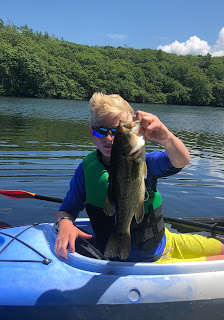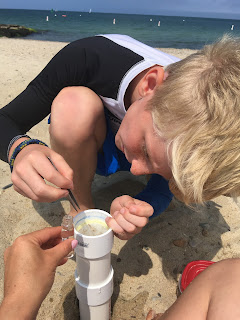Microphone
Input Connection for iPhone
We
ran into a few problems when attempting to collect data using the hydrophone.
We attempted to connect the hydrophone to our iPhone using several
different adapters and have yet to find a compatible input connection so that
the app NIOSH will recognize our external microphone. It is important to
collect the data only from our hydrophone, otherwise you will collect data
around you using your internal microphone on your iPhone instead of data under
the water.
We
think we have found the problem. We are currently looking for a splitter with a
microphone input connection that is compatible with iPhones. The NIOSH
app is only built for apple devices.
Therefore you need a product with a TRRS or 4 conductor wiring
configuration (something that only apple uses and recognizes). We also
read we need a CTIA instead of an OMTP wiring configuration. We wrote the
developers of the NIOSH app at EA LAB, and they confirmed that we have yet to
find the correct adapter.
We
have tried several options that did not work.
Lightning
to Headphone Jack:
This option only changes the connection from a 3.5 mm headphone jack to a
lightning connector
iRig
Pre HD:
This option allowed us to use the hydrophone as a microphone and record sound
on our iPhones. Unfortunately, the NIOSH app did not recognize it as an
external microphone.
Splitters: We also have tried two
splitter options. One of them was OMTP.
Another, we thought would work, but we did not read the fine print.
It stated it was compatible with iPhones and it was CTIA, but I later saw
it also said not TRRS. One of the issues we ran across is these types of
splitters are not sold in stores including Best Buy.
Accurate Decibel Levels
Another question we have
concerning collecting data using the NIOSH app and the hydrophone is, will we
able able to get an accurate decibel level?
We are not sure how the
microphone will accurately receive the decibels levels and transmit them to the
phone because the sound that the microphone picks up is always quieter than the
actual sound. We also learned that some homemade hydrophones work better
than other. Would different hydrophones
give you different decibels levels? When
researching our microphone input connection and the NIOSH app, we read articles
on how important it is to have a good quality, calibrated microphone.
Quality of Materials is
Important:
Our second hydrophone
had much better sound quality. It may have been due to building
experience, so if you are not happy with the first one try again. We also
changed the place we ordered the stereo cord and Piezo Element from. Due to a shipping issue, we ordered our first
Piezo Element and stereo cord off of Amazon. For the second one, we
ordered the Piezo Element from SparkFun and the stereo cord from
McMaster-Carr. It seems to us that the
tricky part is adding the epoxy at the end. Before adding the epoxy, you
test out the hydrophone and we noticed a difference in sound right away. This was confirmed when we tested both
hydrophones out next to the bike ferry in Menemsha.







































